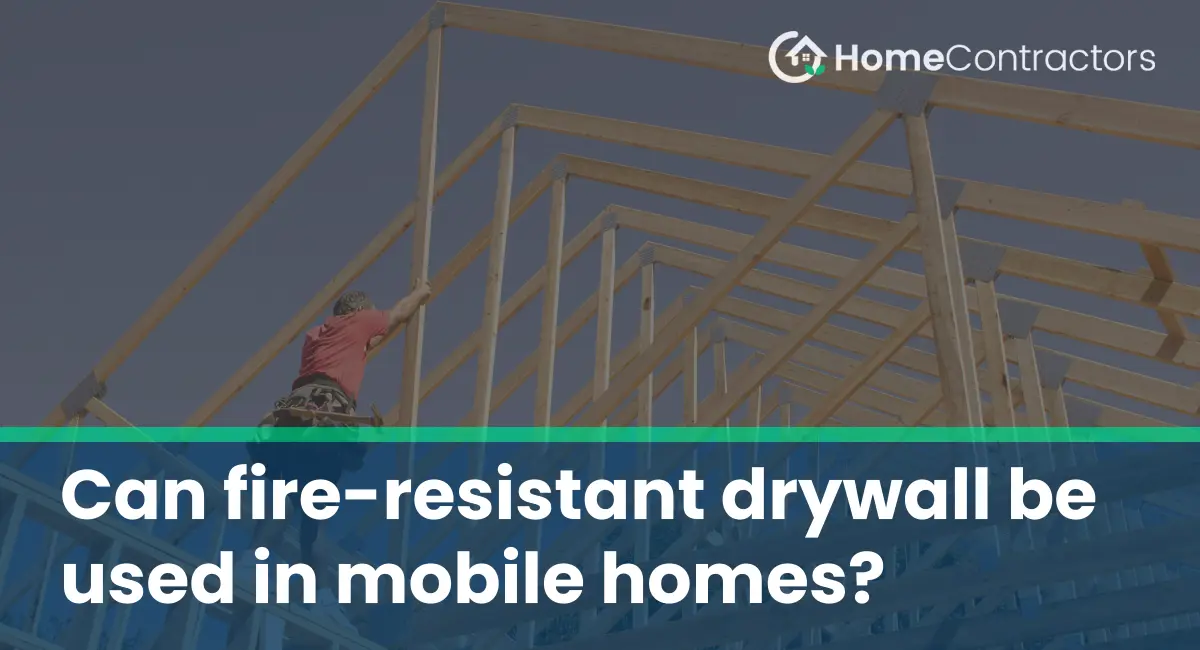Mobile homes are a popular and affordable housing option for many people. However, concerns about fire safety often arise due to their construction and materials used. Fire-resistant drywall is a specialized product designed to prevent the spread of fire, and many homeowners wonder if it is a viable option for mobile homes. In this article, we will explore whether fire-resistant drywall can be used in mobile homes, its benefits, considerations, and alternatives.
Understanding Fire-Resistant Drywall:
Fire-resistant drywall, also known as Type X drywall, is a special type of gypsum panel with added fiberglass and other materials that make it more resistant to fire. This drywall has a higher fire resistance rating than regular drywall and can help slow down the spread of fire in case of an accidental ignition, providing extra time for evacuation and reducing property damage.
Benefits of Fire-Resistant Drywall:
- Increased Fire Resistance: The primary benefit of using fire-resistant drywall is its increased ability to prevent the spread of fire. It has a higher fire resistance rating than regular drywall, which means it can withstand flames and high temperatures for a longer period, potentially saving lives and reducing property damage.
- Added Safety: By installing fire-resistant drywall in a mobile home, homeowners can create a safer living environment for themselves and their families. This added safety feature can bring peace of mind, especially in areas prone to wildfires or other fire hazards.
Considerations for Mobile Homes:
While fire-resistant drywall offers several benefits, there are some considerations to keep in mind when contemplating its use in mobile homes.
- Weight Constraints: Mobile homes are built on a chassis and designed to be lightweight for easier transportation. Fire-resistant drywall is denser and heavier than regular drywall, potentially exceeding the weight limits of the mobile home structure. It is crucial to consult with a structural engineer or mobile home manufacturer to ensure that the additional weight of fire-resistant drywall does not compromise the mobile home’s integrity.
- Installation Challenges: Installing fire-resistant drywall requires expertise and specific techniques to ensure proper fire resistance. It is recommended to hire professionals experienced in working with this specialized drywall, as improper installation could compromise its effectiveness.
- Cost Considerations: Fire-resistant drywall is generally more expensive than regular drywall. Homeowners should consider their budget and weigh the cost-benefit analysis of investing in fire-resistant drywall for their mobile homes.
Alternatives to Fire-Resistant Drywall:
If fire-resistant drywall is not a practical option for a mobile home, several alternatives can still enhance fire safety.
- Fire-Retardant Paint: Applying fire-retardant paint to the walls and ceilings of a mobile home can provide an additional layer of fire protection. This paint contains chemicals that delay the spread of flames and can be applied over regular drywall.
- Smoke Alarms and Fire Extinguishers: Installing smoke alarms and fire extinguishers in strategic locations throughout the mobile home is crucial. These early warning systems can quickly detect smoke and extinguish small fires, allowing occupants to evacuate safely.
- Proper Ventilation and Maintenance: Ensuring proper ventilation in the mobile home can prevent the accumulation of flammable gases. Regular maintenance, including cleaning out dryer vents, checking electrical systems, and inspecting gas connections, can help minimize potential fire hazards.
While fire-resistant drywall can provide an extra layer of fire protection in a mobile home, it is essential to consider its weight constraints, installation challenges, and costs before making a decision. Consulting with professionals and exploring alternatives such as fire-retardant paint or improving fire safety measures can also enhance the level of fire protection in a mobile home. Ultimately, prioritizing fire safety is crucial in any living environment, and investing in preventative measures can bring peace of mind and potentially save lives.
